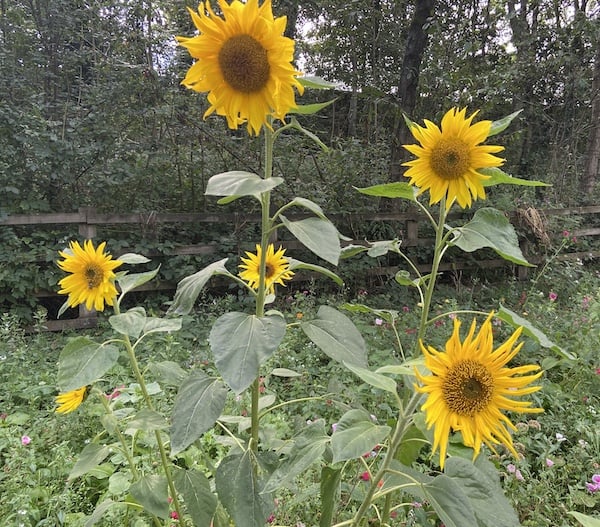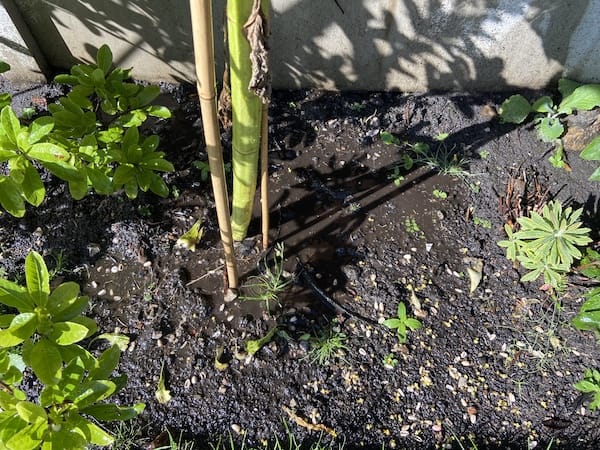You’ll have to do some research to figure out why your sunflowers’ leaves are turning yellow. This is the plant’s way of telling you that it’s hurt or even dying. The problem could be over-watering, an imbalance of nutrients, not enough space and yet other reasons. The main issues that lead to this unwanted change are talked about, along with ways to fix them so that your sunflower stays healthy.
As a sunflower lover few sights make your heart sink faster than looking over at your prized plant only to see its leaves looking less than lively. The appearance of yellowing leaves can set panic mode into full swing.
But before you get too worked up, take a deep breath. Yellow leaves happen and the causes are usually manageable with a few simple fixes. Arm yourself with knowledge and you can get your sunflower back to its beautiful self in no time.
Top Reasons Sunflower Leaves Turn Yellow
Yellowing leaves typically signal some type of stressor in the plant’s environment or care regimen. Here are the most common culprits:
-
Improper watering – Both overwatering and underwatering can cause yellowing. Too much moisture suffocates the roots and leads to fungal issues. Too little leaves the plant dehydrated.
-
Nutrient deficiencies – Lack of nitrogen is a prime suspect for yellow leaves. Insufficient nitrogen keeps the veins green while the rest of the leaf fades to yellow.
-
Diseases – Fungal pathogens like leaf spot and rust can lead to yellowing. Check for small brown/black spots surrounded by yellowing.
-
Pests – Insects and mites do their damage by munching on leaves and stems. Undersides of leaves are common hiding spots.
-
Sunscald – Too much intense sun can burn leaves, resulting in yellowing and wilting. This is especially common in younger plants.
-
Natural aging – Lower mature leaves naturally turn yellow and drop off as the plant focuses energy on new growth up top.
-
Cold damage – Chilly temps or frost can damage leaves, causing yellowing and dieback. Protect young plants when cold snaps hit.
Steps to Diagnose and Treat Yellow Leaves
Accurately diagnosing the cause of yellowing is the first step. Here are tips to sleuth it out:
-
Check soil moisture – Is the soil soggy or bone dry? This indicates underwatering or overwatering.
-
Look for patterns – Are yellow leaves clustered lower down or scattered throughout? This helps pinpoint the culprit.
-
Inspect closely – Use a magnifier to check for insects on the undersides of leaves. Also look for spots or lesions.
-
Review recent conditions – Have there been any extreme weather events like cold snaps? Temperature swings can stress plants.
-
Consider recent care – Did you recently repot, fertilize, move the plant or alter watering? Any changes can impact leaves.
Once you know why your sunflower is yellowing, you can take the appropriate steps to restore health:
-
Overwatering – Back off on watering and take steps to improve drainage.
-
Underwatering – Gradually increase watering frequency/volume.
-
Nutrient issues – Test soil and amend accordingly. Fertilize carefully.
-
Diseases – Remove and destroy infected leaves. Apply organic antifungal options.
-
Pests – Wipe or spray leaves with insecticidal soap. Release beneficial insects.
-
Sunscald – Move plant to a shadier spot.
-
Natural aging – Prune old leaves to focus energy on new growth.
Optimizing Sunflower Care Practices
An ounce of prevention is worth a pound of cure when it comes to avoiding yellow leaves:
Water carefully – Water deeply but infrequently, allowing the top inch of soil to dry out between waterings. Provide good drainage.
Fertilize minimally – Sunflowers are not heavy feeders. Test soil and amend as needed. Too much fertilizer can damage roots.
Prune regularly – Remove spent blooms (deadhead) to promote flowering. Prune yellow or damaged leaves to improve airflow.
Scout for pests – Check plants frequently and take early action against insects/mites. Remove diseased leaves promptly.
Plant wisely – Ensure sunflowers have appropriate sun exposure for their variety. Space properly to allow airflow.
Prepare for weather swings – Help young plants handle heat or cold fluctuations by providing shade structures or protective covers.
Divide mature plants – Congested sunflower clumps often have more issues. Divide overgrown plants in fall.
When to Worry About Yellow Sunflower Leaves
A few fading lower leaves on a mature sunflower is normal. But if yellowing is widespread or rapidly taking over, it likely signals a significant issue that needs attention. Other warning signs include:
-
Wilting or drooping leaves
-
Stunted growth
-
Leaf drop
-
Flowers failing to open
-
Visible pest infestations
-
Multiple dead leaves
Dramatic yellowing that quickly worsens often indicates root problems. Dig down to check roots for rot and check soil drainage. Catching it early is key to recovery.
While yellow leaves on sunflowers is disheartening, a bit of TLC and troubleshooting can get your plant back on track. Keep a close eye on your sunflower, and you can enjoy its bright blooms for years to come.
Is the sunflower getting the right nutrients?

The plant can die if it doesn’t get any nutrients or if it gets too many or too few of the right ones. Sunflowers usually don’t need fertilizer, but if the soil doesn’t have enough nutrients, it should be given the right nutrients or fertilizer so the sunflower can grow strongly and healthily.
The most important nutrient for sunflowers is nitrogen. Too little nitrogen leads the stem to weaken, the leaves to turn yellow and the plant to start dying. MiracleGro recommends its Water Soluble All Purpose Plant Food as the fertiliser to use for these plants but I have had some great success with tomato feed too. Be careful though as adding too much nitrogen to the soil results in the sunflower producing fewer blooms but many leaves.
Are you giving your sunflower too much water?

Even though sunflowers like it when it’s damp, the soil around them will get too wet after a while, especially if it doesn’t drain well. Feel around the ground below your sunflower plant. If it’s water-logged, you have a problem.
To make the soil drain better, turn it over and add some sand and broken-down organic matter. This also helps the soil hold the right amount of water and gives the plant’s roots nutrients. In addition, reduce how much water you give to the plant. Sunflowers that are already grown need to be watered regularly around the roots until the soil is wet a few centimeters down.
Why are my sunflower leaves turning yellow?
Why is my sunflower drooping & turning yellow?
When you notice the leaves of your sunflower drooping and turning yellow, it’s the plant’s way of saying, “Hey, I need some help here!” Drooping leaves are often softer than healthy ones and might even seem somewhat dehydrated. The yellowing usually starts at the lower leaves and works its way up the plant.
Why are my sunflower leaves turning brown?
If no other issues seem to be present, your sunflower may just be reaching the end of its natural life cycle. When a sunflower reaches the end of its life, leaves may turn yellow before ultimately turning brown, withering, and dying. There’s nothing you can do about this issue; it’s just the natural progression of your sunflower.
What causes yellow spots on Sunflower leaves?
To manage aphids, use insecticidal soaps or neem oil and encourage beneficial insects in your garden, like ladybugs and lacewings. Downy mildew is a fungal disease that causes sunflower leaves to develop yellow spots, often accompanied by a grayish-white fungal growth on the underside of the leaves.
Why are my leaves turning yellow?
Yes, overwatering is one of the reasons why a plant’s leaves will turn yellow. Overwatering is one of many stress reactions that force the lush leaves to fade into yellow before curling, wilting, and then dropping off. What deficiency causes the yellowing of leaves?
- The Ultimate Guide to Growing Strawberries in Raised Beds - August 8, 2025
- No-Dig Garden Beds: The Easiest Way to Grow a Beautiful Garden - August 6, 2025
- How to Protect and Preserve Wood for Raised Garden Beds - August 6, 2025

